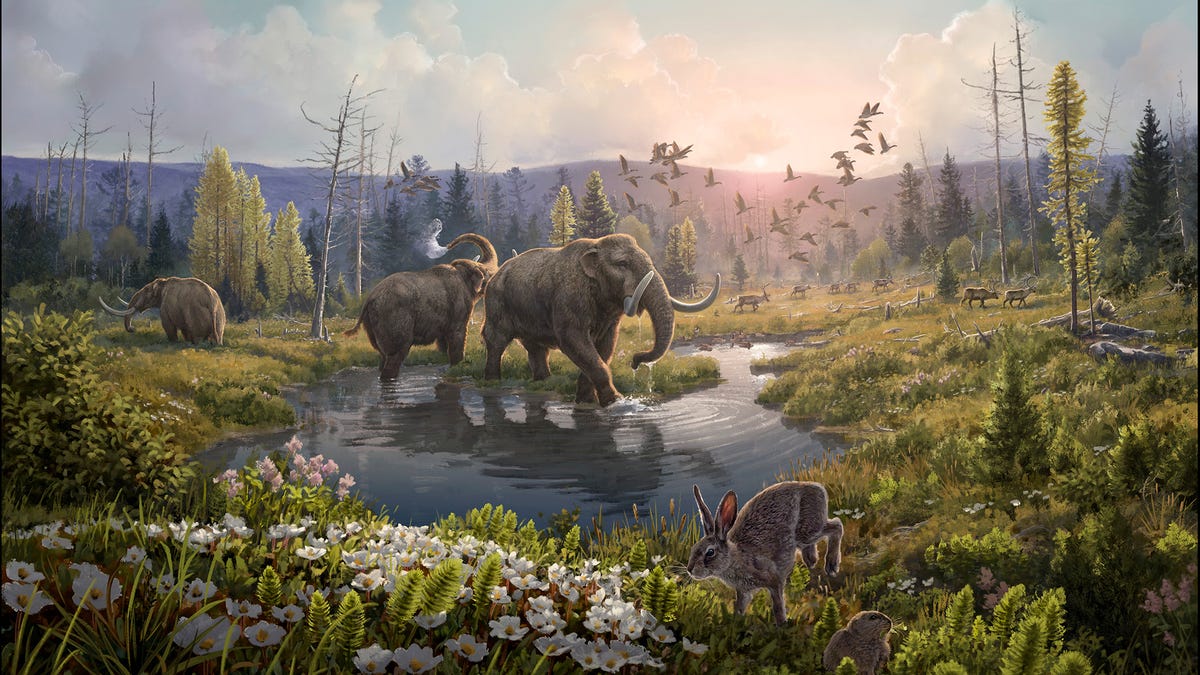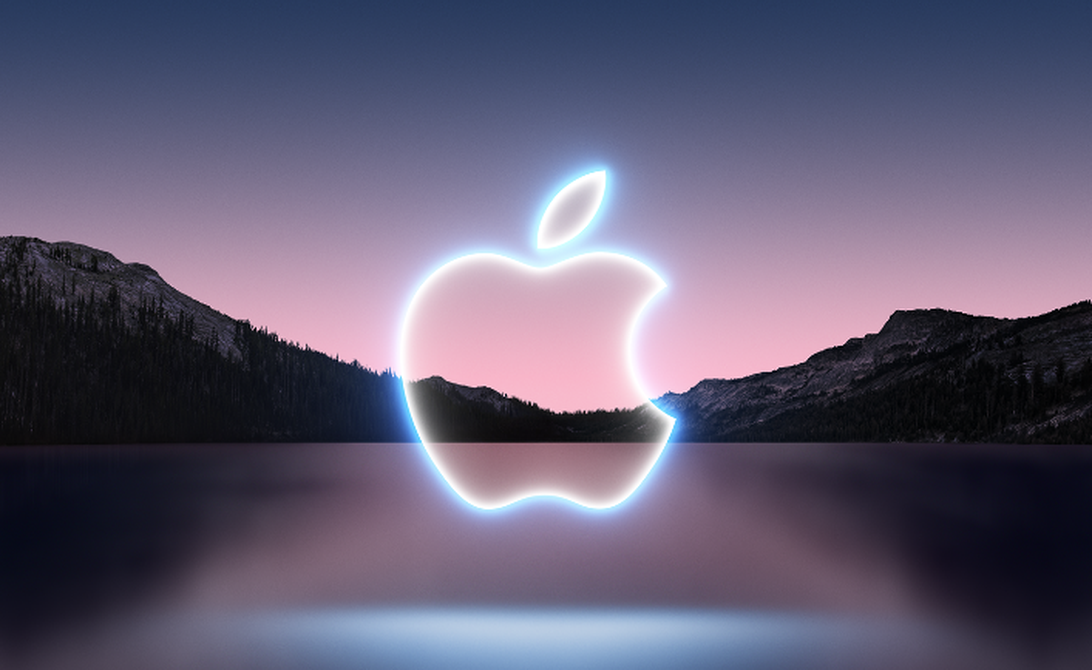Technologies
2 Million-Year-Old DNA, the Oldest Ever Recovered, Opens Window to the Past
The prehistoric forest of northern Greenland was home to mastodons, reindeer, hares and an abundance of plant life.

As early as 2006, Eske Willerslev and members of his lab ventured into northern Greenland with a drill, extracting cores of sediment from the Kap København Formation. They were hunting for environmental DNA, or eDNA, in their cores — puzzle pieces that could help paint a picture of the plants and animals present in the region 2 million years ago.
But for the longest time, they came up empty-handed. «Every time we had improvements in terms of DNA extraction or sequencing technology, we’d revisit these samples,» Willerslev, an evolutionary geneticist at the University of Cambridge, said in a press briefing on Tuesday.
No matter what, the researchers failed to get what they were looking for. The run of bad luck saw members of the lab turn to the occult for an explanation; they named their troubles «the curse of the Kap København Formation.»
But with steady improvements in DNA extraction and sequencing technologies, the curse was finally broken.
On Wednesday, the team published the results of their 16-year pursuit of ancient DNA in the journal Nature. They were able to sequence eDNA from 41 sediment samples, collected in 2006, 2012 and 2016 from the Kap København Formation and undisturbed by humans for 2 million years. Their analyses revealed that a lush forest replete with reindeer, hares, mastodons and a wide variety of flora once stood in what is now a dull, gray polar desert.
Willerslev, a pioneering geneticist who has previously recovered eDNA from ice cores and shown it could survive in glaciers, noted that the «breakthrough» relied on expertise, advances in genetic sequencing techniques and bioinformatics.
History in the soil
DNA, which carries the instructions for life, is not a particularly sturdy molecule. The bonds that hold it together are weak and, over time, they break down.
This is why, even though we have an abundance of dinosaur fossils, we don’t have any dinosaur DNA. The beasts died out 66 million years ago, and the DNA would simply not survive that long.
When DNA degrades, the once-long strands of information break apart into smaller and smaller pieces. It becomes almost impossible to piece these fragments back together in the right configuration, especially if they are mixed in with a lot of other DNA from the environment.
Think of DNA like a book. Let’s say Alice in Wonderland. If you have the whole book, you can understand the story. But if you’re missing a few pages, you might not understand where the White Rabbit came from or why Alice ended up at a tea party with the Mad Hatter. If you’re missing lots of pages, you probably can’t even tell what the story was to begin with. Alice? Who’s that? And why is she 10 feet tall?
That’s the problem working with ancient DNA. You might be able to retrieve small fragments of DNA but it is generally too fragmented to be able to tell where it came from — and certainly too fragmented to understand where it came from.
But under certain circumstances, DNA fragments can survive deep time.
«The ‘survival time’ of DNA in the environment is incredibly variable and strongly dependent on the environment itself,» notes Michael Knapp, an ecologist and geneticist at Otago University in New Zealand.
Previously, the oldest DNA ever recovered came from mammoth fossils found in the Siberian permafrost. In a Nature paper in 2021, researchers showed that DNA from the mammoth teeth was, potentially, about 1.6 million years old. The DNA recovered was broken up into small fragments but they weren’t degraded so much they couldn’t be pieced back together. The cold temperature of the permafrost certainly helped with this.
It’s a similar story in the new study.
Willerslev and his collaborators postulate that the long survival time of the DNA in their sediment cores was possible for two reasons. The first is the constant cold temperature of the polar desert. The second is the way the DNA is bound to minerals in the cores, preventing degradation over longer time scales. The idea is that these mineral surfaces prevent enzymes from breaking down the DNA.
Karina Sand, a geochemist at the University of Copenhagen and co-author on the paper, explained that one of the technological leaps that enabled this feat was extracting DNA from clay and quartz minerals. The latter provided an abundance of DNA, but the former was harder to extract good DNA from. Fortunately, that leaves the door open for even older DNA extraction.
«If we can get better at extracting the DNA from the clay minerals, then we think we can go further back in time with DNA,» she said.
The research team was able to extract DNA from the sediment cores and begin to read the surviving fragments. These fragments were then compared to a database of genomes (complete DNA sequences) of modern plants and animals, looking for DNA matches. Over time, they were able to fill the blank pages of history, demonstrating the thriving ecosystem of ancient Greenland.
The ancient forest of Greenland
Two million years ago, Greenland was a different place.
«The Kap København ecosystem, which has no present-day equivalent, existed at considerably higher temperatures than we have today,» noted Mikkel Pederson, a geneticist at the Lundbeck Foundation GeoGenetics Centre, in a press release.
In northern Greenland, average temperatures during this time were likely more than 11 degrees Celsius (around 20 degrees Fahrenheit) higher than they are today. Previous studies at Kap København have shown evidence it was home to a boreal forest, but the eDNA extracted and analyzed in the new study provides a complete reimagining of the area, adding in megafauna and a wide variety of plant life.
The headline mammal DNA found in the cores is undoubtedly the mastodon — which is having a bit of a moment thanks to social media. Some of the eDNA found matched to the Elephantidae family, which includes elephants, mammoths and mastodons. It seems mastodons may have roamed Greenland 2 million years ago, though the researchers note the evidence isn’t extremely strong and is based on relatively weak DNA matches.
The team also found DNA related to reindeer, hares and rabbits, and the subfamily of animals that includes lemmings, voles and muskrats. Notably absent, however, is DNA from carnivores. The researchers suggest this is because of their comparably small biomass in relation to the herbivores. «It’s basically a numbers game,» Willerslev said.
One of the more intriguing DNA finds is of the Atlantic horseshoe crab. The species is no longer found at such northern latitudes, and the authors suggest this may mean Kap København experienced warmer sea surface temperatures 2 million years ago. Previous research has suggested the sea surface was warmer at higher latitudes, and the discovery of horseshoe crab DNA lends further support to this hypothesis.
Warmer temperatures are key. Multiple authors on the paper have reiterated the importance of understanding an ecosystem like this, given the effects of global warming. Two million years ago, the climate was changing and the eDNA shows that Arctic species were living with species that loved much warmer climes. This helps scientists to get an understanding of how nature was adapting to those changes and, within the DNA signatures, there may be clues to ways we could help modern-day fauna and flora survive extreme climatic swings.
One of the significant limitations of studying eDNA is that scientists have to postulate about the kinds of species that were living at the time. Knapp notes closely related ancient species might give you a DNA match but this is «somewhat inaccurate» — it provides an approximation of what existed. We may only be able to assign the DNA at a family or order level, so we can’t know exactly what roamed the boreal forest of Greenland 2 million years ago.
Even so, the recovery of DNA this old opens a new window to the prehistoric Earth, a pathway for scientists and researchers to probe the ecosystems that existed long before humans were around. The team will head to northern Canada to extract cores next year and hope to go even further back in time.
The extraction method may even lend itself to finding DNA in more humid climates across the world, like in Africa and Australia.
«If we can begin to explore ancient DNA in clay grains from Africa, we may be able to gather ground-breaking information about the origin of many different species —perhaps even new knowledge about the first humans and their ancestors,» Willerslev said in a statement.
«The possibilities are endless.»
Technologies
Razer’s Wolverine V3 Pro 8K Controller Won’t Replace My Mouse and Keyboard, but Here’s Where It Shines
I applaud the absurdly high polling rate, six extra remappable buttons and TMR sticks, but let me tell you why I’m sticking with my keyboard and mouse for most games I play.

The Razer Wolverine V3 Pro 8K PC controller was not built for me, but admittedly, this has more to do with me as a gamer than the controller itself. I grew up playing the PlayStation 3 and PS4 consoles, cutting my teeth on slim, compact DualSense controllers. Over the past five years, I’ve gamed exclusively on my PC and have grown accustomed to the increased precision of a mouse and keyboard.
The Razer Wolverine V3 Pro 8K PC controller is the antithesis of a DualSense controller. It’s a chunky piece of hardware that might feel natural if you were raised on an Xbox and its bulky controllers, but it took me multiple gaming sessions to get acclimated to the sheer size of the Wolverine V3 and how it fit into my hands, especially since I don’t use a claw grip.
Size aside, this is a PC controller with every bell and whistle you can think of — and its price of $200 reflects that. The 8,000Hz polling rate ensures buttery smooth inputs with no lag, and tunnel magnetoresistance joysticks make every in-game movement feel fluid and calculated. Six extra remappable buttons help you up your game — they’re super handy for hero shooters like Marvel Rivals and hectic games like Battlefield 6. This is a premium product for gamers who are hoarding some serious hardware.
Its price is in line with other premium controllers. One of CNET’s best Xbox controllers is the Wolverine V3 Pro for Xbox, which also costs $200. Similar controllers like the Scuf Instinct Pro and Vitrix Pro BFG are in the same ballpark, pricewise, but the Wolverine V3 Pro 8K PC has a winning combination of competitive variables that make it feel exceptionally easy to use.
This controller is chock full of top-of-the-line technology and feels satisfying to use, but it needs to clear a high bar to feel truly worthwhile as a dedicated PC controller.
Chunky controller, satisfying feedback
When CNET’s Josh Goldman reviewed the Wolverine V3 Pro Xbox wireless controller, he called it «just about perfect.» If it isn’t broken, don’t fix it: Razer replicated many of its successes with the Wolverine V3 Pro PC controller.
The Wolverine V3 Pro 8K PC is the same size as the Wolverine V3 Pro Xbox controller, which is to say it’s a bit chunkier than a standard Xbox wireless controller, but it’s surprisingly much lighter than its Xbox cousin. It weighs just 220 grams, which is appreciably lighter than the Xbox version that weighs 304 grams. And while the Wolverine V3 Pro 8K PC is nowhere near as slim as a DualSense controller, it’s still much lighter than its Sony competitor — a stock DualSense controller weighs 280 grams.
Every button on this controller has a crisp, clean clickiness that scratches the same mental itch that a good mechanical keyboard might. Whether you’re gripping the trigger, pressing a button or squeezing one of the four remappable back paddles, you’ll hear incredibly satisfying auditory feedback that leaves no doubt that the controller is receiving your inputs. At one point, while I sat through a particularly long matchmaking queue, I found myself squeezing the triggers to entertain myself — the snappy pops were enough to keep me off TikTok.
The biggest difference between the V3 Pro Xbox and V3 Pro PC controllers is the variable polling rate — that dictates how often your controller is communicating with the computer. It’s like a refresh rate for your crosshair positioning.
The Wolverine V3 Pro Xbox just can’t compete here: That controller has a wired 1,000Hz polling rate for PC gameplay. The V3 Pro PC controller can be toggled for multiple polling rates, with an 8,000Hz maximum setting. This means the PC controller can report your input data eight times faster than the Xbox controller.
Every movement, turn and button press feels incredibly fluid. It’s safe to say that there’s no input lag with the Wolverine V3 PC controller, but I don’t think it matters too much for moment-to-moment first-person shooter gameplay. If you’re driving a car (or a tank) and you need to stop on a hairpin, you might appreciate Razer’s HyperPolling technology. If you’re not playing a tactical shooter like Counter-Strike or Rainbow Six: Siege, that 8,000Hz polling rate is overkill — if you’re a casual gamer crushing Call of Duty public lobbies with your pals, you’re probably not going to notice it in any of your firefights.
Better than a mouse and keyboard? That’s a little more complicated
I tested out the Wolverine V3 Pro 8K PC controller on Marvel Rivals, ARC Raiders and Battlefield 6 (my current first-person shooter obsession). It’s an extremely solid choice for at least two of these games, and I likely won’t be using my DualSense controller anytime soon.
I had a great time firing magic bolts in Marvel Rivals and rolling tanks through the streets of Cairo in Battlefield 6, but this is a controller that was supposedly designed for high-level shooter gameplay. I’m saddened to report that, when it comes to dominating a first-person shooter match or competing to survive in an extraction shooter, I’d much rather stick to a mouse and keyboard.
In close-range battles, I didn’t feel like the Wolverine controller particularly helped me gain an advantage over my opponents. Mouse-and-keyboard players were often able to lock onto me quicker, even with a high look sensitivity and built-in aim assist. And I felt outmaneuvered and outgunned by mouse-and-keyboard players in the fastest-paced fights. But the controller’s precision TMR thumbsticks made it easy to quickly lock my crosshairs onto enemies and mow them down from afar with light machine guns or sniper rifles in long-range battles.
I also find it useful for games like Battlefield that have a lot of buttons to micromanage during moment-to-moment gameplay. If you want to swap your fire mode from automatic to single-fire, mount your weapon’s bipod against a flat surface or pull out an invaluable class gadget, you’ll be reaching across your keyboard to do so. The six remappable buttons on the Wolverine V3 Pro 8K PC are great for these situations; I loved that I could tap fire my hulking light machine gun by gripping one of the controller’s back paddles.
The controller really shone for vehicle combat, though. I found myself gravitating toward my mouse and keyboard for infantry gunplay, but anytime I’d jump into a tank, I’d reach across my desk and grab the Wolverine again. Having pressure-sensitive triggers helps with any in-game driving: A slight squeeze lets me cautiously move forward, scanning for enemy mines, while fully pulling the trigger down helps me speed out of dangerous situations. Rebinding automatic repair jobs and weapon switches to the back paddles also helped me focus more on in-game combat, which helped me keep my armored vehicles in the fight for longer. With my DualSense controller, I’d have to awkwardly fumble with the D-Pad to activate my vehicle abilities. The Wolverine controller is the definitive way for a Battlefield tank enthusiast to play.
Outside of standard first-person shooter gameplay, I also found the Wolverine V3 PC controller to be handy for hero shooters — with some caveats. When I play Marvel Rivals, I mainly play tanks that require an extensive amount of ability usage but very little aim. Characters like Doctor Strange thrive when you can quickly string inputs together, and rebinding the controls to the Wolverine’s back paddles is great for that.
On the other hand, speedy divers that need to jump in and out of the enemy team’s backline and aim-intensive snipers feel tougher to play with the Wolverine controls, and I’d swap back to my mouse and keyboard whenever I wanted to switch off tank characters and fulfill another role for my team.
One game I don’t recommend the Wolverine V3 Pro PC for is ARC Raiders. While the remappable buttons make it easy to reach for healing items and grenades, losing out on the precision aim of a mouse and keyboard just isn’t worth it in a game where one death can set your progress back by several real-life hours. The controller lets me hold my own against killer ARC robots, but once real players join the mix, I’d rather use my tried-and-true PC hardware setup.
That’s not to say that the Wolverine controller is terrible for a tactical third-person shooter: The back paddles are a great way to quickly access any healing items, grenades and other consumables you’re carrying, which could be the difference between life and death. But when I have teammates depending on me to help them escape with their hard-earned loot, I just don’t trust the Wolverine controller to help me aim better than I can with my trusty mouse and keyboard.
For playing first-person shooters like Call of Duty or Apex Legends at breakneck speeds, the Wolverine V3 Pro 8K PC likely won’t replace your mouse and keyboard. But if your ideal competitive game centers on slower gunplay and long-range firefights, this is the most precise controller I’ve ever laid hands on (and you’ll receive a healthy heaping of help from aim assist to boot).
For the games I like to play, the Wolverine V3 Pro PC controller hasn’t become my primary gaming peripheral. Instead, it’s become a great situational swapout that complements my mouse and keyboard. As much as I like keeping it on deck for a long gaming session, $200 is a high price for a part-time controller.
Technologies
The Most Exciting Video Game Rumors and Leaks Ahead of 2026
Technologies
Today’s NYT Mini Crossword Answers for Wednesday, Dec. 17
Here are the answers for The New York Times Mini Crossword for Dec. 17.

Looking for the most recent Mini Crossword answer? Click here for today’s Mini Crossword hints, as well as our daily answers and hints for The New York Times Wordle, Strands, Connections and Connections: Sports Edition puzzles.
Need some help with today’s Mini Crossword? Read on. And if you could use some hints and guidance for daily solving, check out our Mini Crossword tips.
If you’re looking for today’s Wordle, Connections, Connections: Sports Edition and Strands answers, you can visit CNET’s NYT puzzle hints page.
Read more: Tips and Tricks for Solving The New York Times Mini Crossword
Let’s get to those Mini Crossword clues and answers.
Mini across clues and answers
1A clue: Nod (off)
Answer: DOZE
5A clue: Naval submarine in W.W. II
Answer: UBOAT
7A clue: Tricky thing to do on a busy highway
Answer: MERGE
8A clue: Heat-resistant glassware for cooking
Answer: PYREX
9A clue: Put into groups
Answer: SORT
Mini down clues and answers
1D clue: Break up with
Answer: DUMP
2D clue: Falls in line, so to speak
Answer: OBEYS
3D clue: Legendary vigilante who cuts a «Z» with his sword
Answer: ZORRO
4D clue: Rarin’ to go
Answer: EAGER
6D clue: Common reminder for an upcoming appointment
Answer: TEXT
Don’t miss any of our unbiased tech content and lab-based reviews. Add CNET as a preferred Google source.
-

 Technologies3 года ago
Technologies3 года agoTech Companies Need to Be Held Accountable for Security, Experts Say
-

 Technologies3 года ago
Technologies3 года agoBest Handheld Game Console in 2023
-

 Technologies3 года ago
Technologies3 года agoTighten Up Your VR Game With the Best Head Straps for Quest 2
-

 Technologies4 года ago
Technologies4 года agoBlack Friday 2021: The best deals on TVs, headphones, kitchenware, and more
-

 Technologies4 года ago
Technologies4 года agoVerum, Wickr and Threema: next generation secured messengers
-

 Technologies4 года ago
Technologies4 года agoGoogle to require vaccinations as Silicon Valley rethinks return-to-office policies
-

 Technologies4 года ago
Technologies4 года agoOlivia Harlan Dekker for Verum Messenger
-

 Technologies4 года ago
Technologies4 года agoiPhone 13 event: How to watch Apple’s big announcement tomorrow
